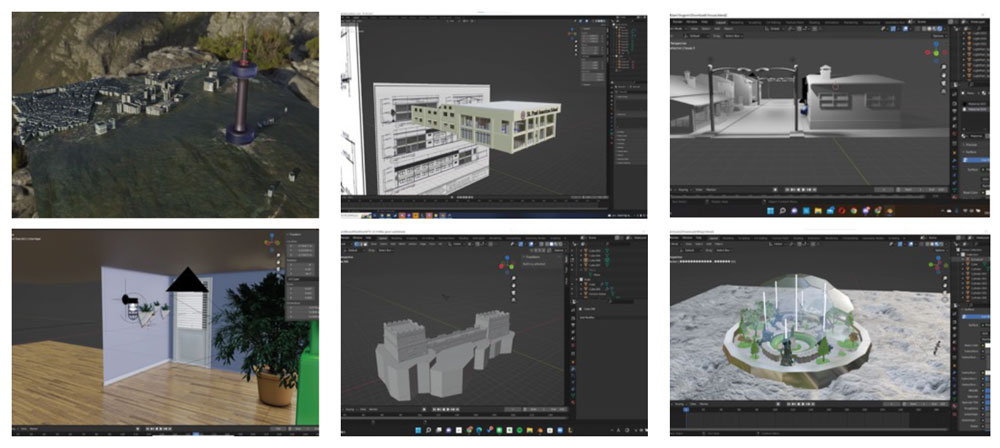
Examples of astronomy student work using Blender, a computer graphics program, at Saint Paul American School. (Photo source: Nate Madrid)
---------------------------------------------------------------------------------
Before the pandemic, our science, technology, engineering, arts, and math (STEAM) program was composed mainly of Vex robotics, Arduino electronics, and 3D printing at Saint Paul American School (SPAS) in Clark, Philippines. Then the pandemic forced us into online education for five straight semesters. When transitioning to online learning, our Head of School challenged us to be innovative with our lessons, so it seemed like the right time to experiment with other STEAM education technologies. As the STEAM Coordinator, I decided to use the Blender computer graphics software to help perpetuate our students’ love of STEAM subjects during their online classes.

Examples of biochemistry student work using Blender, a computer graphics program, at Saint Paul American School. (Photo source: Nate Madrid)
Blender is a completely free and open-source software with a highly active online community. Many step-by-step lesson videos are publicly available on the internet. Although Blender was not originally designed as an educational software, and rarely is it ever used in STEAM education, it was easy to see the potential of this software. At SPAS, we used Blender to augment our high school math, programming, biochemistry, astronomy, history, architecture, and engineering lessons.

Examples of architecture student work using Blender, a computer graphics program, at Saint Paul American School. (Photo source: Nate Madrid)
In particular, Blender offers a nice framework for building physics simulations. In the Fall semester, our high school engineering students first studied how to create physics simulations in Blender. Then, they followed the engineering design process (EDP), as described by NASA, to design and build their virtual battle bots. In the Spring semester, those same students enrolled in a follow-up computer animation course, where they focused on the aesthetics and graphics rendering for their physics simulation.
Shown below is the first iteration of a physics simulation that students designed in Blender for their virtual battle bots competition. Watch the video here.
Below are highlights of the final version. Watch the video here.
For more examples of student work, please visit our STEAM Gallery.
Computer graphics has tremendous potential to impact and inspire our STEAM students. Drawbacks are that there can often be a sizable learning curve for computer graphics software and currently there appear to be very few publicly available examples of integrating advanced computer graphics into traditional high school lesson plans. I recommend TinkerCAD for teachers and students wishing to get started with computer graphics in the classroom. In the future, I hope to encourage my students to create online lesson videos explaining their processes, so that other students and teachers can learn from their experiences.
More information about Blender can be found here.
I have also had success using the following websites in my online STEAM classes:
VEXcode VR - programming virtual robots in a web browser.
Code.org - lesson plans and activities for computer programming.
TinkerCAD - activities for 3D design and building virtual Arduino circuits.
Minecraft education - lesson plans and activities for computer programming.
If you were able to successfully integrate other computer graphics or STEAM software into your lessons, please share in the comments section below!
---------------------------------------------------------------------------------
Nate has an M.S. degree in computer science and 14 years of experience in STEAM education at the secondary and post-secondary levels in the US, China, Philippines, and Korea. For the past four years, he was the STEAM coordinator and college counselor at Saint Paul American School in Clark, Philippines. This academic year, he will be starting his new position as head of school at Saint Paul Academy Daechi in Seoul, Korea.